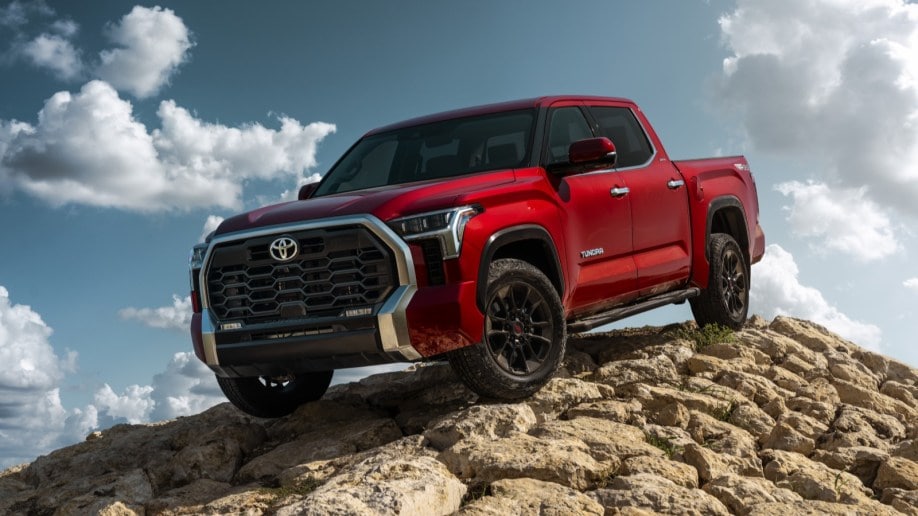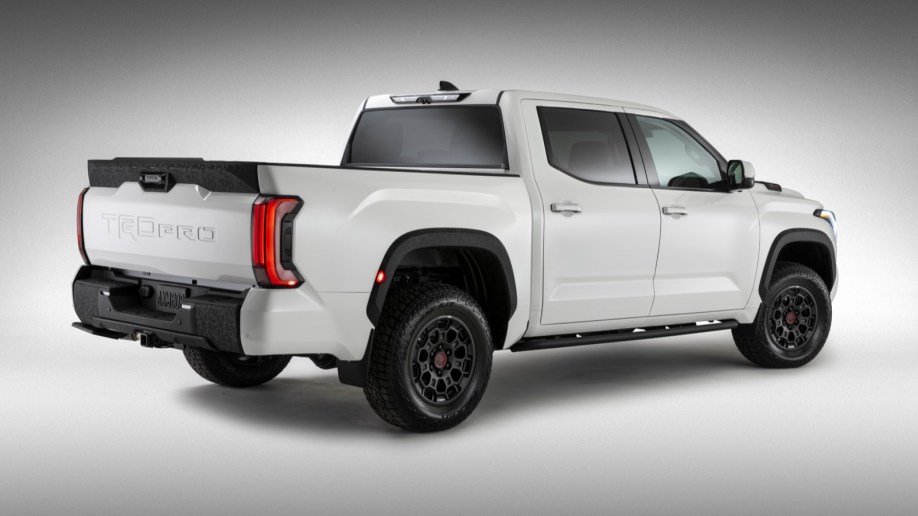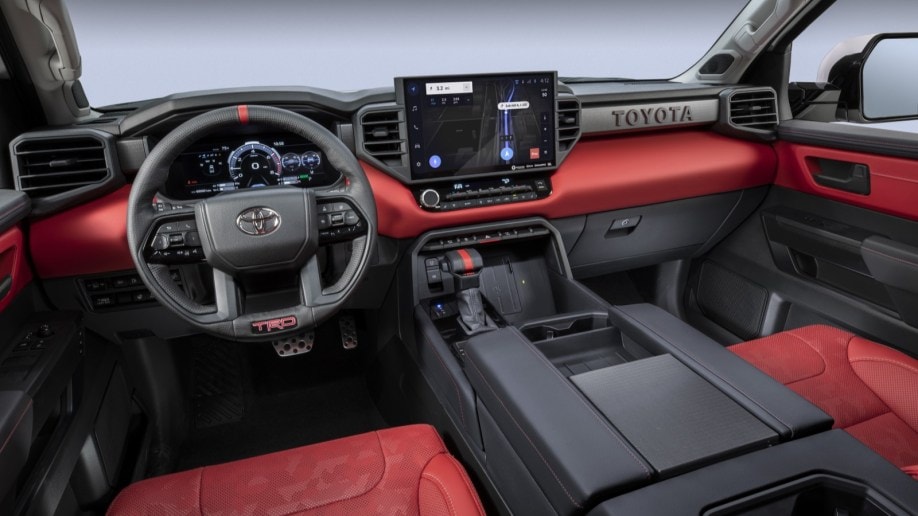
But that was then, this is now. Full-size pickups aren’t used just for towing, hauling, and shoving their way through mud. They also carry kids to school, stop at the grocery store, and commute. Automakers sell them on their brawn. Drivers use them for their versatility.
Toyota designers seem to have figured this out. The company knows how to build an excellent pickup — their two-truck lineup won them our most recent Best Truck Brand award.
They’ve made some unique decisions with the 2023 Toyota Tundra that make it perhaps the most intriguing vehicle in its class. They haven’t given it the biggest engine in the segment. They haven’t given it the highest towing capacity or the most flexible suspension. Here’s how it’s different from the traditional full-size pickup:
Just Two Engines
The current Chevy Silverado offers a choice of four engines. Ram offers four for its Ram 1500. The Ford F-150 offers five, plus the all-electric F-150 Lightning. Once buyers decide which of these trucks to buy, the big decisions have only started.
Toyota keeps that powertrain choice much simpler with the 2023 Tundra. There are two.
The base 3.5-liter, twin-turbo V6 puts out 389 horsepower and 479 lb-ft of torque. It’s good for 19 or 20 combined mpg, depending on the truck’s configuration.
A step up brings a hybrid powertrain that is both more powerful and more efficient. It makes 437 horsepower and 583 lb-ft of torque. That full torque hits at just 2,400 rpm, making it useful for towing. This hybrid delivers 19 to 22 combined mpg, depending on the truck’s configuration
That hybrid system can drive under electric power alone, but only up to 18 mph.
Modern Suspension
When Toyota last redesigned its full-size truck, every truck on the market used a leaf spring suspension setup in the rear. Since then, designers have begun to move toward more sophisticated modern builds. The Tundra, like the Ram 1500 and the Ford Raptor, now uses a coil spring, multi-link rear suspension.
It gives the 2023 Tundra a more comfortable on-road ride. An adaptive air suspension available on the 1794 edition adds versatility.
That suspension connects to a fully boxed frame for the first time. The bed is lined in an aluminum composite designed to resist dings while minimizing weight.
Buyers can choose from both 2- and 4-wheel-drive layouts.
Standard Automated Safety Systems
Active safety systems, including a pre-collision system that can detect pedestrians and bicyclists, is standard at all trim levels. A rear-seat reminder will prompt the driver to check the back seat after parking if a rear door was opened when the truck started. Dynamic radar cruise control and Lane Tracing Assist don’t let the driver take their hands off the wheel but help ease the driver’s workload on the highway.
Off-Road Focused TRD Pro
Like most truck makers, Toyota offers an off-road specialist edition as well.
The TRD Pro sits 1.1 inches higher on 2.5-inch diameter FOX internal bypass shocks. A front stabilizer bar, an aluminum front skid plate, and all-terrain Falken tires beef up performance on rough terrain. A Multi-Terrain Select system (also an option on lower trim levels) lets you select the surface type and adapts performance accordingly.
All those extra suspension components are painted red, so everyone knows the TRD Pro is special. Optional red leather takes the look inside, complete with a digital camouflage pattern on seating surfaces. That same digital camo, in grayscale, lines exterior trim bits like the wheel arches and upper front bumper.
Check this week’s Fair Purchase Price or see the Tundra models for sale near you.








